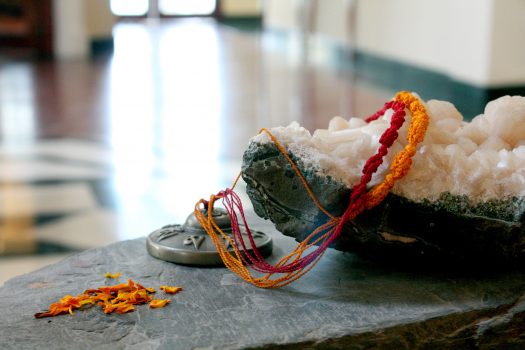In India, threads of myriad hues and thickness, worn by themselves or with added pendants, are worn as symbols of divine blessing, protection against negative forces and even as signifiers of social responsibilities.
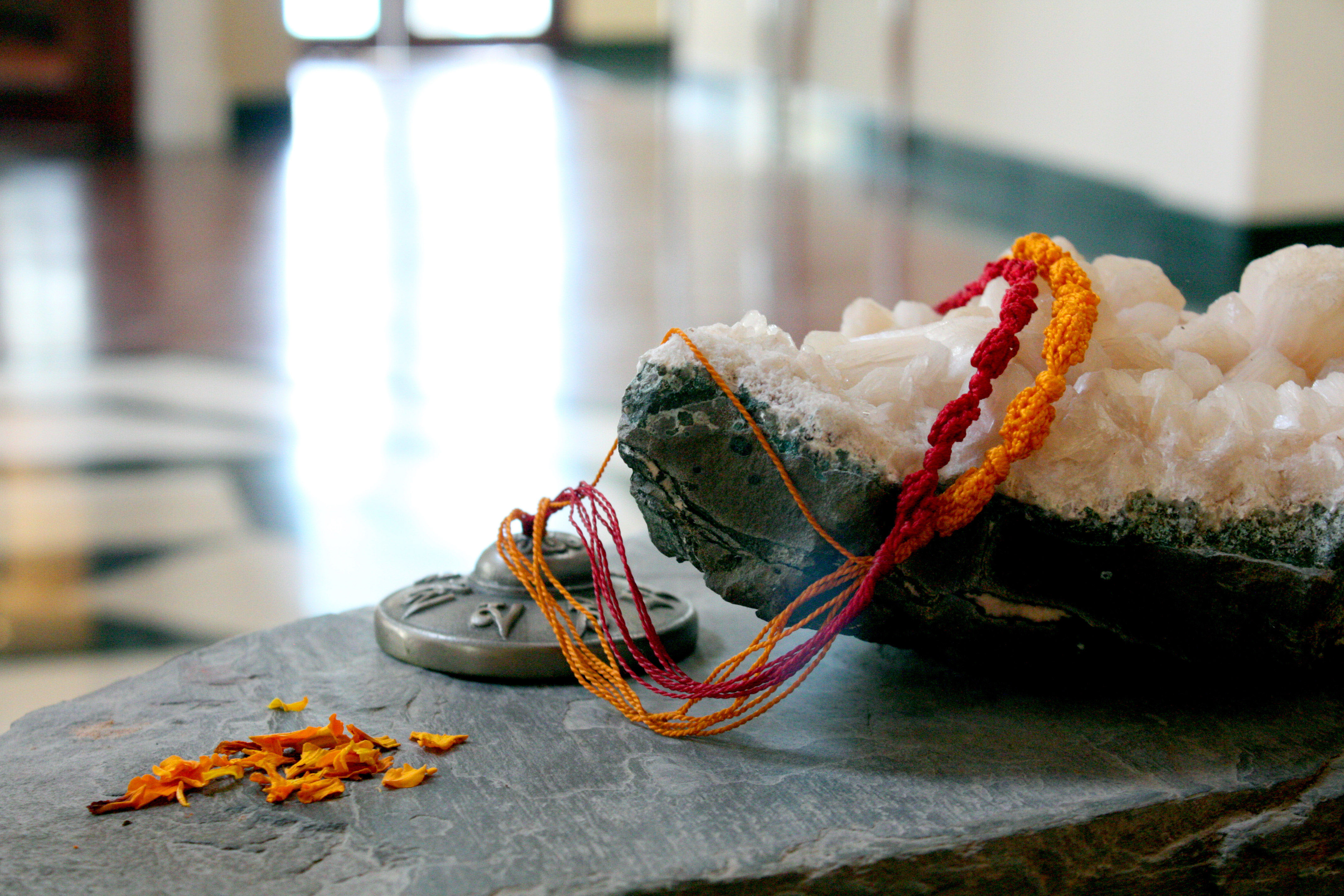
In a nutshell
Threads of various hues and materials are very significant in India. They are used as symbols of divine blessing and protection against evil. And also as reminders of one’s responsibilities to family, society and God.
Meaning and Deeper Meaning
Indian men, women and children commonly wear various types of threads knotted around their wrists, arms, ankles or necks. Men of certain castes also wear threads across one shoulder and torso. These threads are significant in different ways. The most ubiquitous of these threads is the one that signifies marriage. At the wedding, the groom knots a thread or strands of threads on which special pendants are strung, after it is blessed by priests, around his bride’s neck. Later, these pendants may be transferred to a gold chain and is traditionally worn constantly by women throughout married life.

Women and girls also tie ornamented strands of threads called rakhis on the wrists of men and boys they consider their brothers at the Raksha Bandhan festival. It symbolises their love and prayers for the men; and in return, the recipients pledge to protect and care for the women.
Primarily the Brahmin community, but also some other sectors, have coming-of-age ceremonies for boys, where they are invested with sacred threads worn diagonally on their torsos. These threads are routinely changed, and when the young man enters matrimony, the number of strands is doubled to signify his added responsibilities.
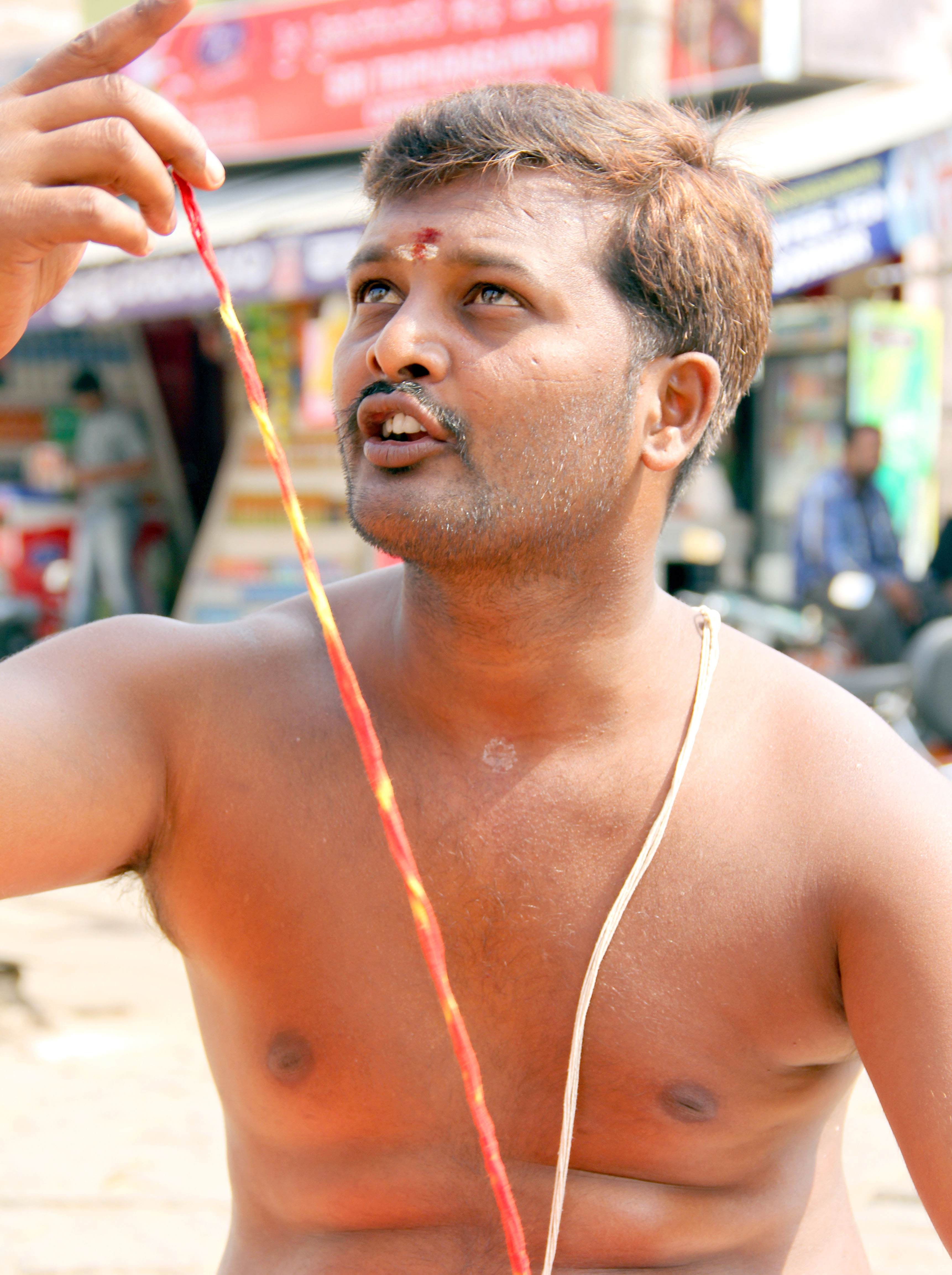
Apart from these, red, orange or black threads blessed by priests may be worn by the young and old alike for spiritual energy. On certain auspicious days, cotton threads are also tied around the sacred peepal tree by married women, as they walk around it 108 times, praying for the well-being of their husbands. The symbolism is possibly that relationships are as fragile as the cotton thread, but with effort they can be strengthened and sustained.
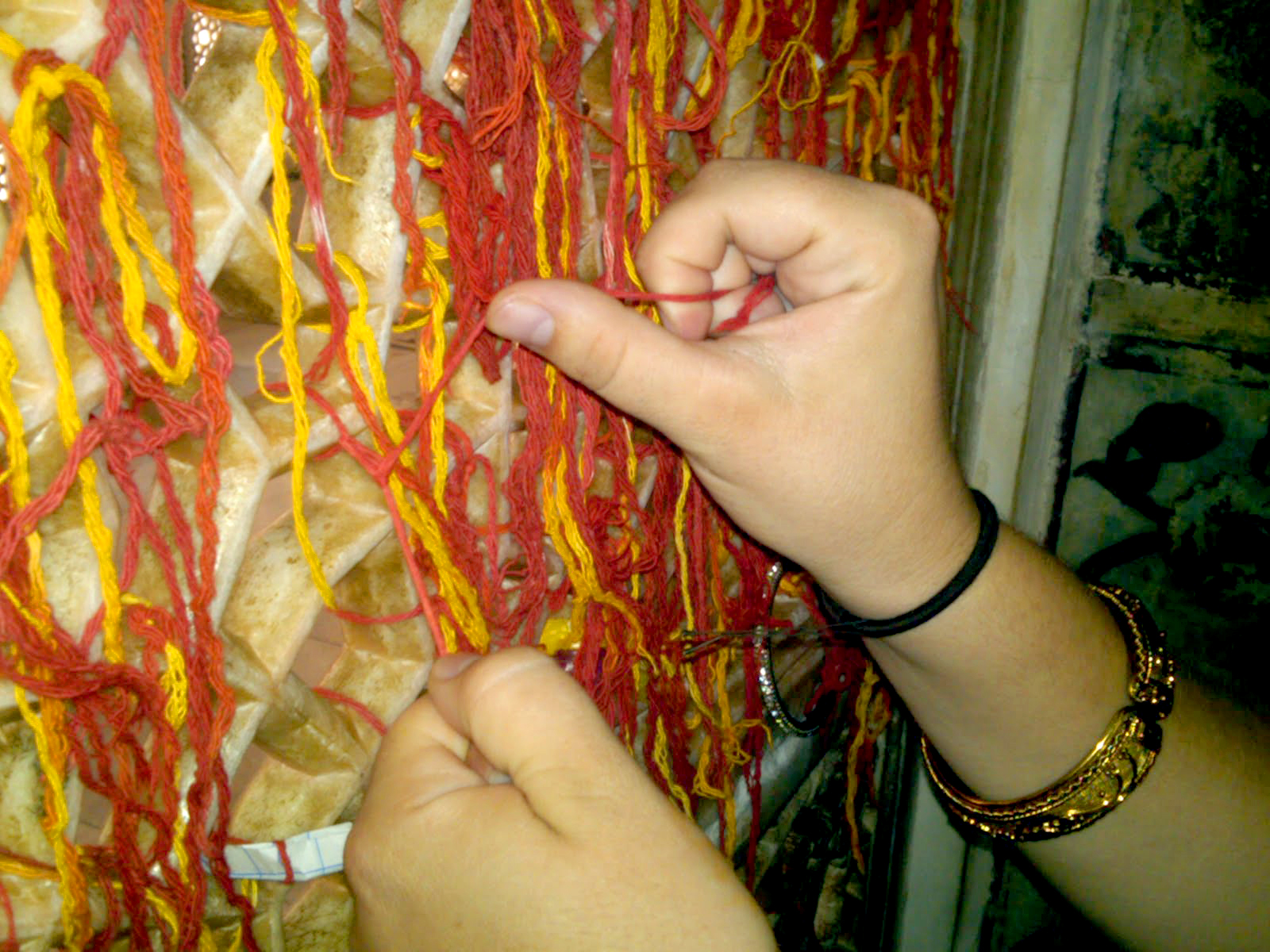
The Stuff of Legends
Yama and Yamuna were the children of Surya, the Sun God. Surya’s wife Sanjana, unable to bear Surya’s radiance, returned to her matriarchal home, leaving her shadow, Chaya, in her stead. Surya was unaware of the swap, and had a child with Chaya, who then began mistreating Sanjana’s children. Yama rebelled, and Chaya cursed him. Yama told Surya of the incident, and the Sun God figured out that Chaya could not be his true wife. He confronted her, and the truth came out. He got Sanjana back after cutting down his radiance, but he could not save Yama totally from the curse. Yama became the God of Death, and was sent to rule over the underworld. Yamuna, his sister, was inconsolable. After many years, she asked Goddess Ganga to help her meet her brother. Ganga reminded Yama about his sister, and on the auspicious day of Shravan Poornima, Lord Yama visited his sister. Overjoyed, Yamuna prepared delicious food for him, and tied a sacred thread on his wrist. Pleased, Yama blessed her, and decreed that any man who has a sacred thread tied on his wrist by his sister on that auspicious day each year would be blessed with health and wealth, and that he must in return take responsibility for protecting his sister from all difficulties. The day is celebrated as Raksha Bandhan. Initially, it underlined the brother–sister relationship, but now, it transcends blood ties.*

* Folk tales in India tend to vary in terms of plot and narrative, even while the characters are the same, depending on the region and the source they are drawn from. For example, there is a similar story about Yama and his sister, Yami, to depict the origin of Bhai Dhooj, a celebration of the ties between brothers and sisters, which is held on the final day of the five-day Diwali celebration in North India. The essence is the same, even though some details may vary.
Scientific substance
Whatever the religious significance of the threads, their positioning is important. Most of these symbolic threads are worn either life-long or for significant periods of time. They constantly massage the body at spots considered key in oriental systems of medicine for promoting health and
well-being.
Saying it in verse
“Mangalyam thanthuna nena mamajeevana hetuna
Kante badhnami shubage thwam jeeva sarada satam”
– Said by the groom to his bride while knotting the mangalsutra or mangalyam around her neck.
(“This sacred thread is responsible for my life. I am tying it around your neck. O maiden having many auspicious attributes, may you live for hundred long years [with me]”.)
The Aikya Factor
The significance of threads inherent in Indian culture has been adopted by non-Hindus in India. The Syrian Christian community originating in the southern Indian state of Kerala, for instance, incorporates the mangalyam or mangalsutra in their wedding ceremonies. Threads are drawn from a special sari gifted by the groom to his wife to symbolise his commitment to taking care of her material needs, and twisted together for strength. An auspicious pendent is strung on it, and the groom knots this around the bride’s neck as part of the marriage rituals. The pendent is later transferred to a gold chain.
The sacred red thread, known as mouli or kalawa, is an integral part of many poojas. After the worship ceremonies, the kalawa is tied around the wrists of members of the family performing the pooja, as a symbol of divine blessings. These threads are made in various places, but a group of Muslims in Uttar Pradesh takes particular pride in producing them for their Hindu brethren. It is their traditional occupation, carried on for generations. They feel that their job is significant because it bridges religions and binds
two communities.
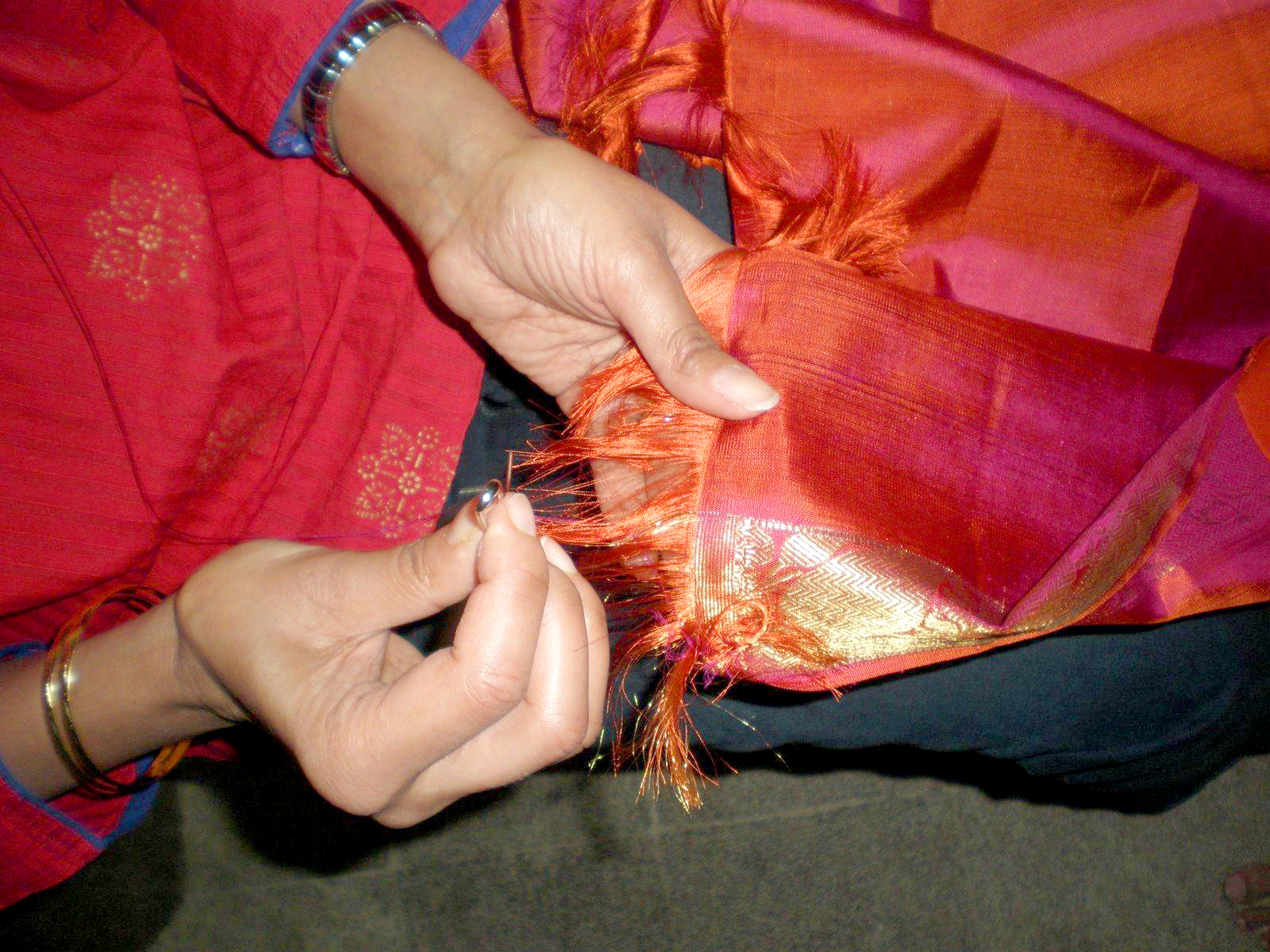 At Chinese wake ceremonies, when mourners who are not members of the family leave, they can take with them a piece of red thread from bunches kept out on tables, to ward off evil spirits.
At Chinese wake ceremonies, when mourners who are not members of the family leave, they can take with them a piece of red thread from bunches kept out on tables, to ward off evil spirits.
Parsi children are initiated into Zoroastrianism in a ceremony called navjyoth, which includes a sacred thread called khusti. The khusti is a reminder of the purity of life and action. It is tied around the waist twice, and secured with two knots, which have their own significance. It can be untied and retied several times during the day.
A Last Word
I weave your name on the loom of my mind
To clean and soften ten thousand threads
And to comb the twists and knots of my thoughts.
No more shall I weave a garment of pain.
For you have come to me, drawn by my weaving,
Ceaselessly weaving your name on the loom of my mind.
– Kabir (Indian mystic and poet, who lived during the 15th century)
